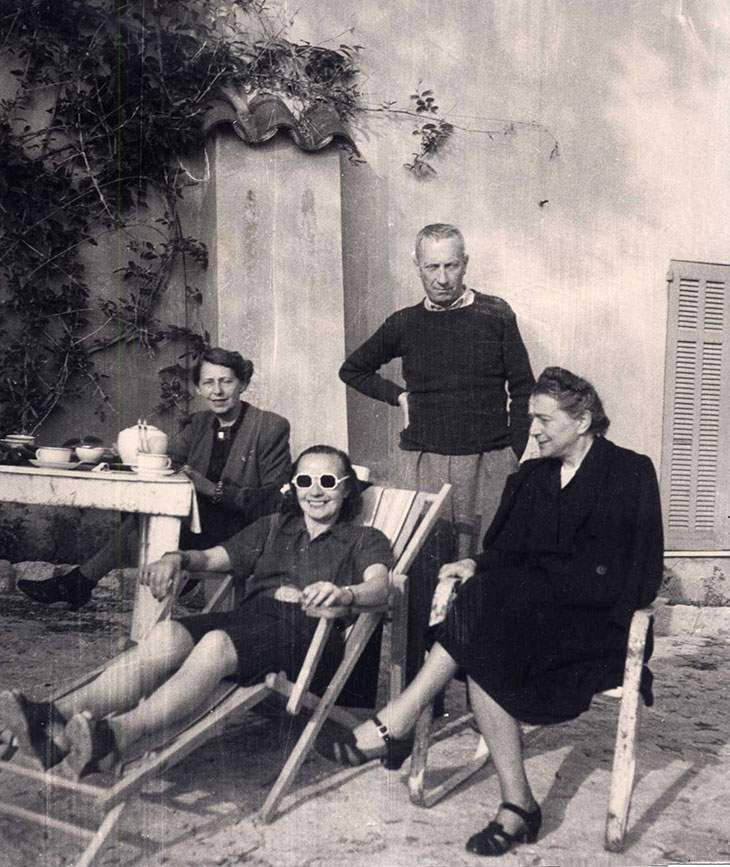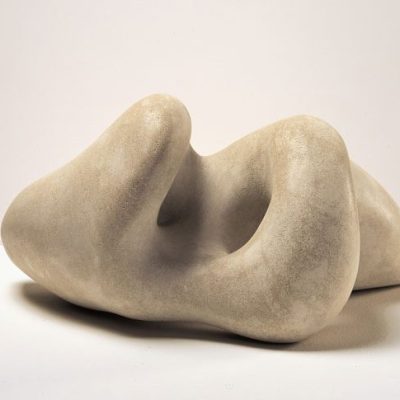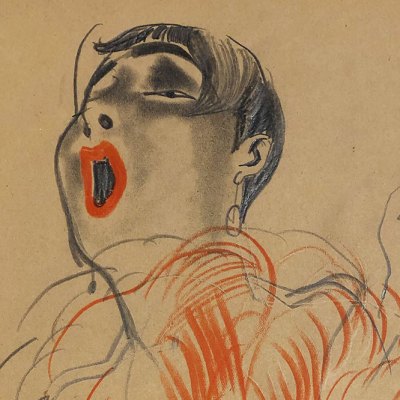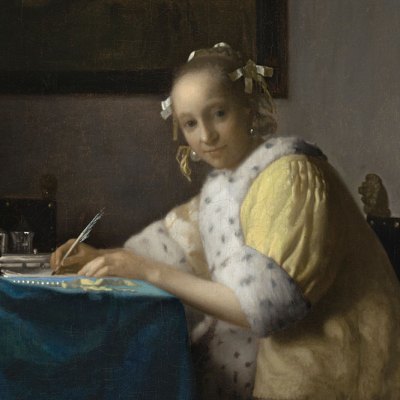In the summer of 1940 Sophie Taeuber-Arp and Jean (Hans) Arp fled their home in Meudon just days before Nazi forces marched into Paris. Stopping first at Nérac in the Dordogne and then Veyrier, where they stayed briefly with Peggy Guggenheim, the couple arrived in Grasse in the south of France in 1941. They would stay here until 1942, living in a chateau found for them by their friends, the Italian artist Alberto Magnelli and his wife Susi Gerson. They were joined later in 1941 by Sonia Delaunay, who was seeking solace after the recent death of her husband, Robert.
Together, Taeuber-Arp, Arp, Magnelli and Delaunay formed a small artistic colony, collaborating on a series of drawings which were eventually published in Paris in 1950 as a portfolio of 10 colour lithographs – known as the Album Grasse. (There is an edition in the collection of the Musée d’Art Moderne de Paris, which can be viewed online.) The works stand as a beautiful record of their time in Grasse, and what is possible when people come together during periods of great adversity. As described by their friend Gabrielle Buffet-Picabia, ‘one of the four would decide on the initial motif and the other three would develop it by drawing on the same sheet of paper’, allowing them to create complex abstract images. With this portfolio, the four artists break from traditional modes of creation and authorship, their names credited equally – unique given the extent to which Taeuber-Arp, for example, was frequently overshadowed by her husband.
The works depict abstract forms floating ungoverned by gravity on the otherwise blank page. Colour is bold and line is definite, with each contribution building on the previous artist’s work to create a greater complexity. In one, Taeuber-Arp’s crisp geometric triangles overlay the sinuous curves of Arp’s biomorphic forms; in another Magnelli’s zigzags complicate the flat forms of Delaunay’s signature discs. As described by Arp, ‘four people blend, submerge, and submit, to attain a plastic unity […] shapes join together and live naturally, as do organs in a body.’
Photograph of (left to right) Sophie Taeuber-Arp, Sonia Delaunay, Jean (Hans) Arp in Grasse in 1942. Photo: © Archiv Fondazione Marguerite Arp, Locarno

Grasse had a short but decisive impact on Taeuber-Arp’s work in particular and she created many drawings during her time there. Her earlier work in two dimensions is largely defined by arrangements of geometric shapes on a flat plane, clearly differentiated and composed in relation to one another. In Grasse, however, as noted by her biographer Roswitha Mair, her compositions evolved, employing curved lines that are overlaid and become tangled with one another. It is easy to see how this approach fed into the Album Grasse, allowing Taeuber-Arp to integrate her visual language into that of her friends.
From the beginning of their relationship, Taeuber-Arp and Arp had created works in collaboration, such as the Duo-Collages from 1916–18. For these, pieces of coloured paper were cut using a guillotine and arranged into simple grid-like compositions, with the pair deciding on the placements together. This allowed two subjectivities into the work while avoiding any obvious individual gesture. Both artists would frequently also collaborate with others, notably working with Theo van Doesburg to create interior designs based on geometric forms for the refurbished L’Aubette club in Strasbourg in the late 1920s. These experiences provided a model that they would develop even further in the confines of Grasse.
Sonia and Robert Delaunay’s work offered another approach to creative collaboration; they had developed together a form of abstract painting they termed ‘simultanism’. This was inspired by Michel Eugène Chevreul’s colour theory, which explored the sensory effects of juxtaposing contrasting or ‘simultaneous’ colours. The pair used interlocking planes of colour to create a heightened sense of movement and vibrancy; it can often be difficult to distinguish the work of one from the other, due to their unified vision. Their partnership would culminate in the large-scale murals both artists made for the Salon des Tuileries in 1938, each titled Rythme. Working alongside her friends in Grasse must have offered a welcome support and inspiration to Delaunay as she began a new stage in life without her husband.
Taeuber-Arp and Arp arrived back to their old home in Zurich in 1942, having escaped Grasse after German troops took over the French unoccupied zone. Taeuber-Arp died the following January, of accidental carbon monoxide poisoning. While the Album Grasse is now a small footnote in the careers of the four artists who produced it, it offers something to aspire to during our own extended period of isolation.


